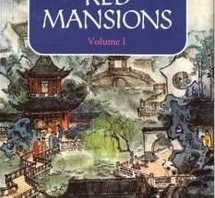Mindblown: a blog about philosophy.
-
Vales of Laughter? Not so much.
I picked up this 1953 comic novel of Peter DeVries after reading a writer whom I respect report that it is a work that literally makes him laugh out loud. This, to me, is an extremely high commendation, something I myself have only experienced with two works over 25 years of “serious” reading: Nabokov’s Pale…
-
The World of the PRB
I have been a fan of the art of the Pre-Raphaelite Brotherhood for several decades, since first encountering their works while sojourning in the United Kingdom. In fact, even before seeing the paintings of Rossetti et al., in their magnificent Tate Gallery splendour, I had already been introduced to their ideas via my work on…
-

A Dream of Red Mansions
I have been absent from the blog for several months due to various reasons, not the least of which is that I have been immersed in reading an extraordinary long work, the Chinese Ming Dynasty classic A Dream of Red Mansions (紅樓夢 Hóng Lóu Mèng; aka Dream of the Red Chamber or The Story of…
-
Boccaccio in Love
I love love, and I love (for the most part) teaching and reading about love, especially when such involves the work of a ‘master’ of love such as Sappho, Ovid, Hafiz, Stendhal, or Octavio Paz. Giovanni Boccaccio, the ‘third leg’ of the great Italian humanist triad after Dante and Petrarch, certainly belongs in such esteemed…
-
Dead Sea Scrolls
I wish I could get excited about the Dead Sea Scrolls, but frankly, I’m having great trouble doing so. And this is from a guy who generally loves sacred texts, for all their weirdness and ‘human, all-too-human’ aspects. Just the other day I was raving to a friend about the Vedas with their longing for…
-
The Evil that is Plastic, Part I
Prior to the recent US presidential election I participated in one of those on-line polls (something I usually avoid as being silly and time-consuming). After asking a series of questions regarding values/policies on a wide range of issues, this poll matches you to the political party (and leader) with which you have the most in…
-
Post-feminist Neo-gothic Fairy Tales
After finishing Ruskin’s Stones of Venice, I turned my ‘leisure reading’ eyes to something completely different — albeit a text and author equally indebted to “Gothic” sensibilities of another sort — Angela Carter’s Bloody Chamber & Other Stories (1979). This collection is a ‘post-feminist’ reconfiguring of classic fairy tales, as bloody and lubricious as the originals, but…
-
The Nature of Gothic
I plan to use these posts to unload random thoughts on any and all topics, especially those connected to the six interlocking spheres most important to me: philosophy, religion, ethics, politics, literature, and the environment. I have no idea if anyone besides myself will ever read them, but that is of little concern to me.…
Got any book recommendations?